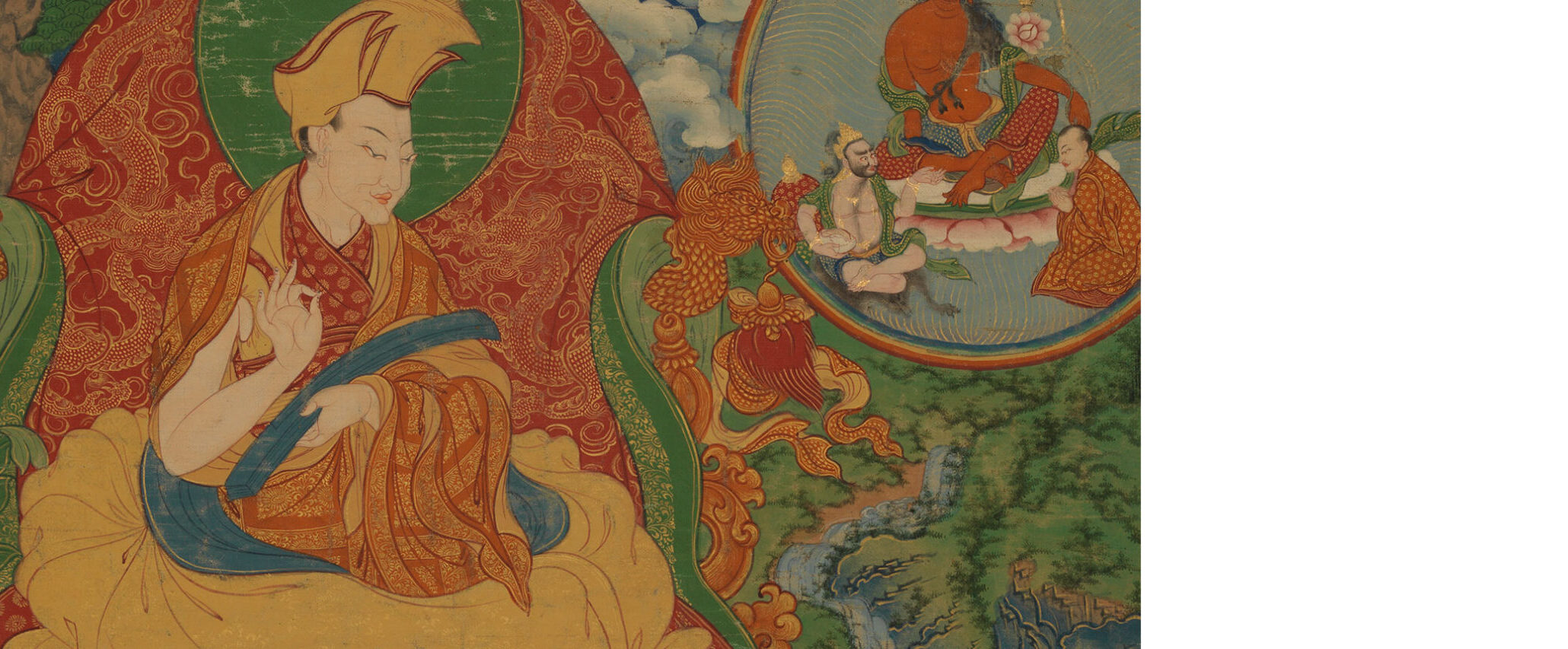
The fourth in a series of exhibitions curated by the renowned Tibetan scholar David Jackson, The Place of Provenance: Regional Styles in Tibetan Painting explores the four distinctive provincial artistic styles of Tibet as well as those of Bhutan, Mongolia, and Qing-dynasty China. Although provincial styles are crucial to identifying the origin of Tibetan paintings, the elements of each style are largely unknown to Western scholars. The exhibition compares certain key elements of landscape, such as skies, clouds, and snow mountains, as a means of exploring the unique artistic attributes of each region. Through his research and this exhibition, Jackson debunks the common Western belief that a single style, the Lhasa-based New Menri, dominated the majority of these provinces in recent centuries.
In the last four centuries, the Menri style (founded by the artist Menthangpa in the mid-fifteenth century) dominated Tibetan painting. It differs from the earlier Indic styles (Sharri and Beri) by featuring Chinese-inspired landscapes in its backgrounds. Four of Tibet’s five provinces had their own dominant styles, each of which was a local variety of the Menri.
Though the provincial styles are a crucial feature of Tibetan painting, they are virtually unknown to most Western art historians. Yet it is essential in order to determine the time and place of creation, to discriminate, for example, painting from the two central provinces U and Tsang. It is also necessary to note that minority styles also existed in each province, including non-Menri styles.
Curated by David Jackson
The exhibition is accompanied by a catalog supported by the Henry Luce Foundation.

